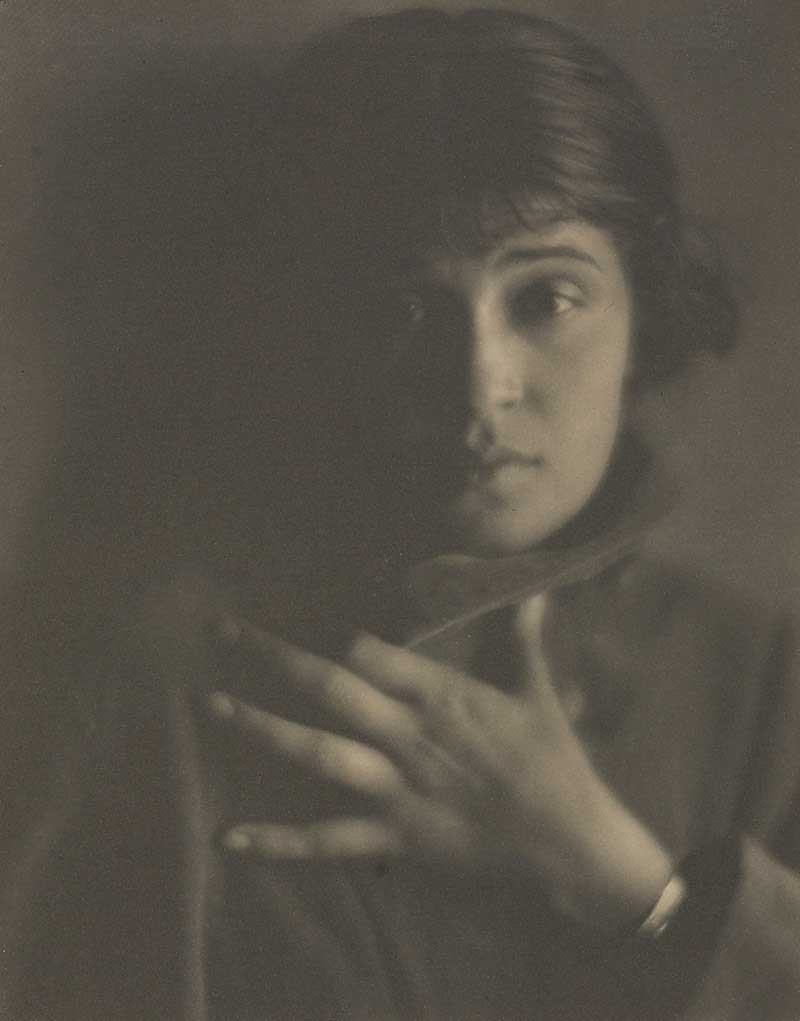Pioneer of photojournalism; Tina Modotti was a very multifaceted woman, as photography was not the only thing that characterized her life. Model, actress, nurse and possibly Comintern agent. She sacrificed much of her artistic sense to give a place to her political beliefs.
Tina Modotti was born in Udine, Italy on August 16, 1896. She grew up in a humble home, her father was a mechanic and her mother a housewife. She studied until age 12 in Italian and Austrian schools, and worked in a silk factory until 1913, when she went to the United States to meet her father in San Francisco. There, she immediately started working in a factory, and then had other jobs as a dressmaker, model and theater and opera actress.

“I never would have believed that I would be so strong and not lose my head in a situation where the wind of collective insanity is blowing.”
Although she began to be recognized in some communities, Modotti wanted to explore other circles. In 1915 she met the young poet Roubaix de l’Abrie Richey, nicknamed “Robo”, with whom she began to explore the places where art and utopia were talked about. In 1917, at age 21, she married Robo, and they moved to Los Angeles, where she got some roles in silent films.
Her artistic career in Hollywood began with the movie “Tiger Lady” in the early 20’s. While she and Robo were introduced to a small Society of Bohemian artists, she met photographer Edward Weston in 1921. Soon after, she modeled for Weston, who taught her about photography and eventually became Tina’s teacher.
Weston and Modotti began an ‘adventure’ while Robo planned an exhibition in Mexico, where he contracted smallpox and died two months before Tina managed to reach Mexico City. Saddened but at the same time hypnotized by the beauty of the city she was meeting, she decides to stay in the city to organize the exhibition of Robo.
In that process, she begins to know and meddle in the artistic revolution of the moment, and convinces Weston (although he was married) to go to Mexico. In addition, she felt that her career as a model and actress no longer corresponded to her ideals and new interests, so she reached an agreement with Weston: to open a photography studio that she was going to direct, in exchange for him teaching her the profession.
Modotti begins to feel more interest in communism, so she gets into photography with a social focus, because it is in Mexico where she witnessed the reality of workers, slums and peasants. It has been said a lot that she was a woman ahead of her time, because she was one of the most emblematic figures of the Mexican cultural scene.
In 1924, she had her first exhibition in Mexico City, in which she included photos of Weston. During this period, she worked as a photographer for Mexican Folkways magazine, taking photographs of workers’ demonstrations, indigenous mothers, murals and other Mexican elements, in addition to working together with Weston in the book Idols Behind Altars. With this, she begins her critical photojournalism, focused on denouncing the misery and abandonment of vulnerable groups.
“I cannot solve the problem of life by losing myself in the problem of art.”
In her interest in exploring the less “privileged” reality of Mexico, she begins to document works by Muralists such as Diego Rivera, Siqueiros and Orozco, forming a friendship with them and the French painter Jean Charlot, who strengthened Modotti’s political commitment. Her ideals begin to change, and in 1927 she renounces some comforts and decides to join the Mexican Communist Party (MCP), where she shares cause with Frida Kahlo.
Modotti separates from Weston and begins to interact with the communist Vittorio Vidali. In 1930 she is expelled from Mexico on suspicion of trying to assassinate President Pascual Ortíz. She decides to travel to Europe and settled in Berlin, where she publishes photos in the Monthly journal of the Association of German Worker ‐ Photographers, Der Arbeiter-Fotograf. She also worked for the British Journal of Photography and the Revue Mensuelle Illustré.
During the 30’s, she lived in Russia, France and Spain; where she lived in own flesh the horrors of Franco’s Civil War, as she had enlisted in a regiment in which, among many other things, she helped soldiers cross the French border and was one of Pasionaria’s trusted nurses (Dolores Ibárruri). When the War ended, she fled to France and then to New York, but she was not allowed to enter the U.S, so in 1939 she returned to Mexico with a false identity and joined the Giuseppe Garibaldi Anti-Fascist Alliance.
On January 5, 1942, Modotti dies in strange circumstances. It is said that she died of a heart attack when a taxi was taking her home; others, as Diego Rivera himself expressed, suspected a communist purge orchestrated by Vidali.






